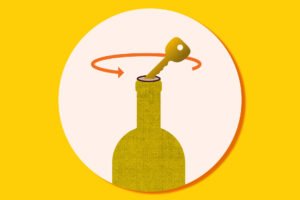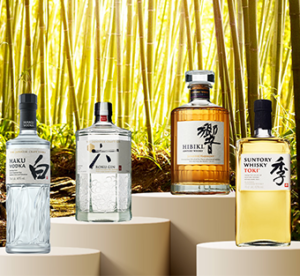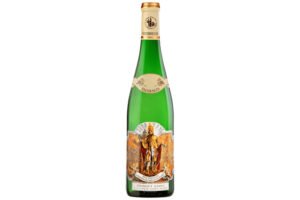How the Deaf Community Is Revolutionizing Wine Communication

[ad_1]
A professional poet and storyteller, Peter Cook’s curiosity about the history, culture and science of wine was fueled by his travels to wine regions worldwide. That passion for knowledge led him to pursue education through the Wine & Spirit Education Trust (WSET).
Now, with his Level 3 advanced certificate, Cook is a wine educator as well. He specializes in wine communication through American Sign Language (ASL) and advocates for inclusivity in the hospitality industry. His goals? To break boundaries and create pathways for Deaf wine community members.
The Language of Wine Love
In 2021, Cook and Laura Brown Unterstein, an ASL interpreter and wine educator, cofounded Uncorked Access, a platform that promotes equitable accessibility for Deaf and Hard of Hearing individuals with a desire to learn about wine.
ASL is a rich, diverse language and does not always translate exactly into English, Cook explains. It has its own structure and syntax. So, when he embarked on his wine education, Cook required his interpreter to sign and explain the instructor’s every word so he could learn WSET’s very specific wine verbiage—much of which is not included in standard ASL.
Keeping an eye on the instructor, their PowerPoint presentations and his interpreter, all while engaging with his fellow students, could be challenging, Cook says. “When the pace of the class got too fast, I’d raise my hand and ask everyone to slow down. It was about managing the situation, being assertive and advocating for myself.”
Today, Cook advocates for others as well, in part by creating a common wine language for ASL signers. “Not many people know the terminology or the signs that would be appropriate,” he says.
He’s able to create these signs with unique ASL linguistic structures. Classifiers, which are designated hand shapes that represent nouns and verbs—what they look like, size, shape feeling—all at the same time. “Some things take longer to communicate because one sign is not enough to explain the concept of the terminology,” Cook says.
This signed wine language is, “a natural progression of the Deaf community,” Cook says, noting that the creation of specialized signs does not automatically induct them into formal ASL.
“When teaching a class, we tread lightly and make it clear that, in this context, we have an understanding, an agreement, that this created sign has this specific meaning, and would not yet be readily understood by anyone outside this particular environment,” says Brown Unterstein.
‘The Winery is For You’
Visiting wineries for tours and tastings poses its own challenges, Cook says. He finds that he’s often “reigning in” guides and hosts so that they will engage with him as an equal. “People are shocked because they have these preconceived notions,” he says.
“This next generation is a little more inclusive, understanding, focused on teaching rather than throwing temper tantrums.”— David Uzzell
This is exactly the kind of prejudice Jesús Martínez Bujanda Mora, CEO and fifth generation owner of Bodegas Valdemar in Rioja, Spain and Valdemar Estates in Walla Walla, Washington, seeks to eliminate.
In 2018, Martínez Bujanda Mora’s 135-year-old family business underwent an extensive renovation to become 100% accessible and inclusive to “groups of people that do not usually have access to the winery,” he says. “We collaborated with different organizations in Spain that work with people who are Deaf, blind, in wheelchairs and others that work with differently-abled communities.” The company also hired a consultant, Equalitas Vitae, to certify its accessibility, says Marisa Alonso Martínez, Bodegas Valdemar’s director of marketing.
When the family opened its Walla Walla facility in 2019, they were able to build an inclusive space from the ground up. “This means we are not only accessible but offer an inclusive and equal experience to all guests, no matter their impairment,” says Kaleigh Brook, Valdemar Estates’ general manager. “But because this is such a broad and diverse field, we consider it an evolving and dynamic project, that likely will never be finished. We continue to add features to our program which diversify our experiences and offerings to guests.”
Today, the flat facility includes strategically placed QR codes that convert to web pages relaying information via ASL and captioning. Tasting notes include icons as visual cues and tasting and dining menus, as well as wine bottle labels, are imprinted with Braille.
“The winery is for you,” says Martínez Bujanda Mora. “There are no ‘special’ experiences. Experiences are all-inclusive.”

Hospitality Matters
Uncorked Access is creating educational workshops on service equality in partnership with New York City restaurant Contento and its beverage director and managing partner, Yannick Benjamin.
“We lead them through an exercise on how to take an order without speaking … you don’t need in-depth sign language,” says Brown Unterstein.
Lip-reading, note-taking and developing simple communication signs play a key role for David Uzzell, restaurant manager of Mozzeria, a Deaf-owned and -operated restaurant in Washington, D.C. The venue is designed with inclusivity in mind, Mozzeria’s open-floor layout has clear lines of sight and windows provide ample natural light for easy navigation. The bar is configured in a ‘U,’ so guests can sign across the space with each other. QR codes on menus allow guests to order food without speaking and the restaurant has partnered with SignSpeak, which implements machine learning for sign language recognition.
Uzzell, himself a member of the Deaf community, learned his culinary skills on the job, from local spots to Michelin-starred restaurants. “Iron sharpens iron,” he says of the difficulties of the work. “The expectations that were freighted upon me were my chance to rise to meet the moment or walk away.”

Despite communication challenges, he describes his experiences in kitchens around the world as predominantly positive. “I’m grateful for the patience of some of my former chefs and coworkers who committed to learning some signs,” he says. Still, “it was a learning process, both for myself … as well as my fellow chefs who needed to take a minute longer than they’re used to sparing to explain finer points or correct my mistakes.”
Openness to communication is “one of the perks” of working in a modern kitchen, Uzzell adds. “The old, cruel masters are retiring. This next generation is a little more inclusive, understanding, focused on teaching rather than throwing temper tantrums.”
Signs of Change
“Deaf space,” explains Cook, refers to a universal concept of accessibility and applies to any facility or experience. For example, he says, you’d install a wooden floor, “so you can tap on wood and send out vibrations.”
There are a whole host of material things businesses can do to establish inclusive environments, but all interviewees agree the most important component is staff training.
“They need to know how to interact with their customers of all abilities,” says Martínez Bujanda Mora.
To the wine industry, Cook emphasizes the need for more inclusivity of the Deaf community.
“But it can’t just be hearing people still in power who are ‘letting’ Deaf people in. This cannot just be a movement from the gatekeepers of the hearing world who want to become more accessible. We need to establish Deaf leadership and support Deaf-owned and -lead businesses. That’s empowerment.”
[ad_2]






